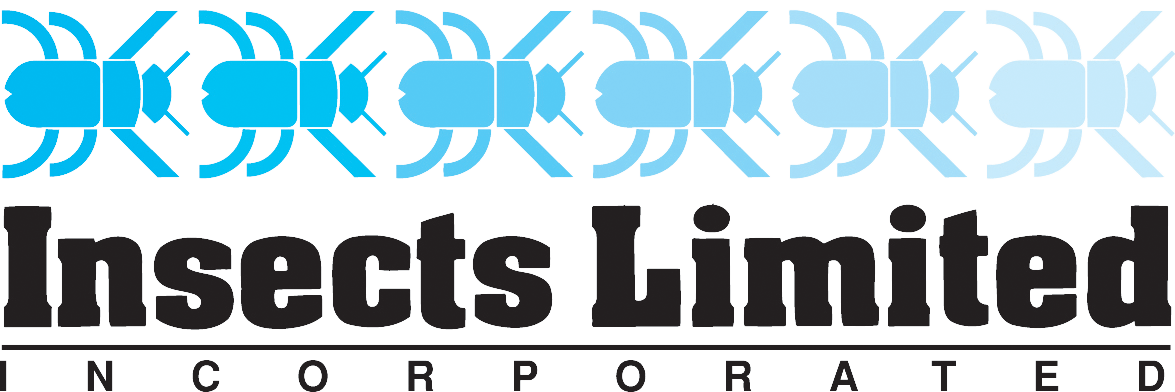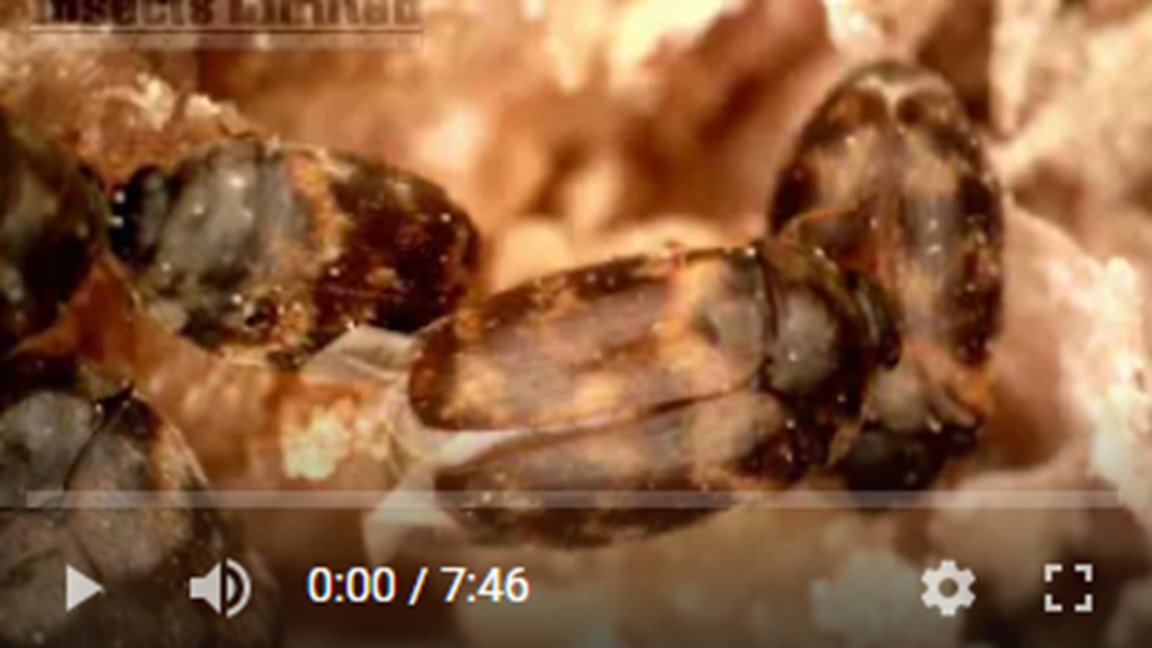
Watch: Complete Lifecycle of the Warehouse Beetle
Following the theme this month in the video featured below, entomologist Patrick Kelley discusses the detailed life cycle of the warehouse beetle from egg to adult.

Product of the Month - PTL Multi-Species Kit (IL-408-10)
PTL represents the Plodia/Trogoderma/Lasioderma insects. The PTL Multi-Species Kit (IL-408-10) features the Insect Limited’s signature pheromone Bullet Lures™ that attract the most common pests of dried goods: Indian Meal Moth (Plodia interpunctella), Mediterranean Flour Moths (Ephestia kuehniella), Almond Moth (Ephestia cautella), Tobacco Moths (Ephestia elutella) and other food moth species; Trogoderma food beetles such as the Warehouse beetle, (Trogoderma variabile), Khapra beetle, (Trogoderma granarium) as well as (Trogoderma glabrum) and (Trogoderma inclusum); and also the Cigarette beetle (Lasioderma serricorne) species with a controlled release of pheromone over 3 months.
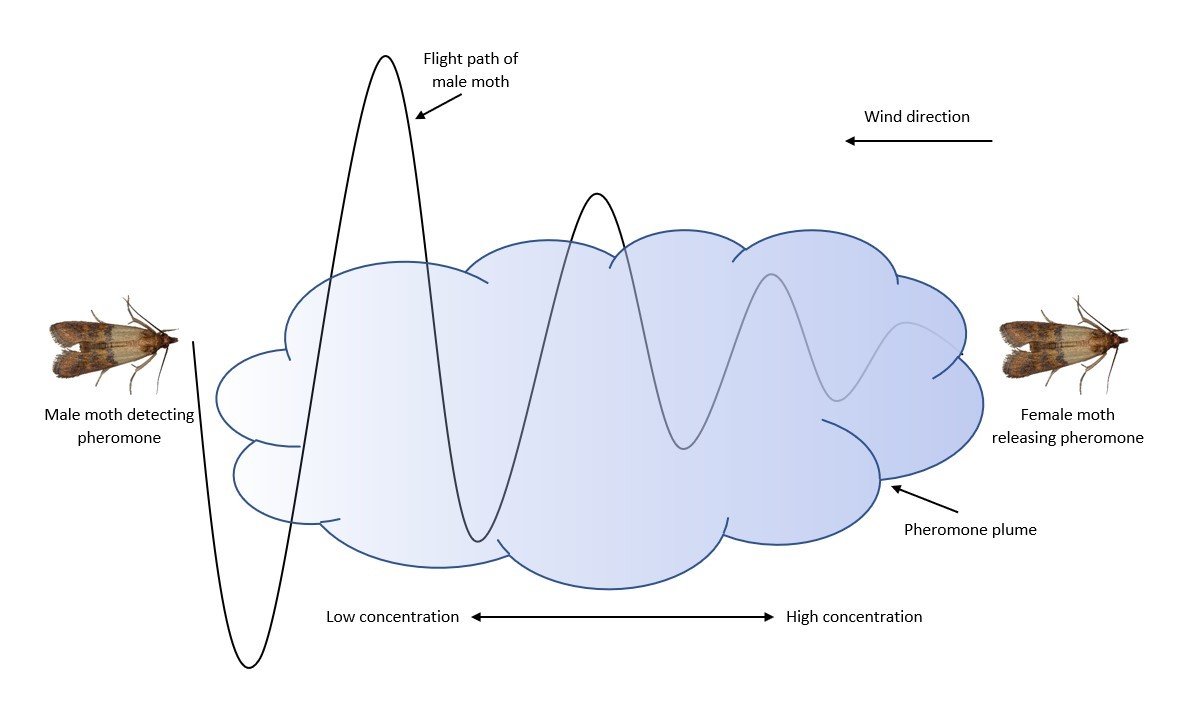
What Are Pheromones?
Pheromones are chemicals that are released by insects that stimulate a behavioral change to other insects of the same species.
This form of chemical communication is used by insects to direct social behavior - including mate attraction, gathering together, egg-laying, foraging for food, trail following, and colony defense

Insect of the Month: Warehouse Beetle (Trogoderma Variable)
Warehouse beetles occur in all life stages in warm buildings, throughout the year with two or three generations occurring each year. Females mate within one day of emerging from the pupa. Five to sixty eggs are deposited near a food site. Larvae will molt 5 or 6 times before pupating.

Why Pest Identification Matters
If part of your job involves pest management, trying to solve pest outbreaks can often become a roller coaster ride with all its ups and downs.
Initially, insect pests make themselves known to us by spilling into our living spaces and workspaces.
First reactions can include annoyance, disgust and in some cases shock when pest damage is revealed.
There is often a knee-jerk reaction is to apply a pesticide to the area to kill everything on six legs.

Watch: Complete Lifecycle of the Fruit Fly
Fruit flies progress from egg, through several larval instars, to pupa and then to adult in as little as 10 days. Males initiate courtship rituals after picking up short-range pheromones from females. Adult fruit flies can live up to 40 days.

Product of the Month - GreenWay Fruit Fly Kit (12 bottles) (IL-1520)
The GreenWay Fruit Fly Kit (IL-1520-12) features the Insect Limited’s custom attractant for common fruit flies. It has been designed to capture red-eyed fruit flies but will also capture dark-eyed fruit flies.

Insect of the Month: Fruit Fly (Drosophila melanogaster)
Fruit flies feed primarily on moist, decaying, organic food items including fruits, vegetables and other fermenting liquids.
Fruit fly infestations can be identified by numerous adult insects flying around a food source or from the maggots infesting decaying food. In heavy fruit fly infestations, pupae can be found some distance from the food source when the larvae migrate away to find a dry, dark, and safe place to pupate.
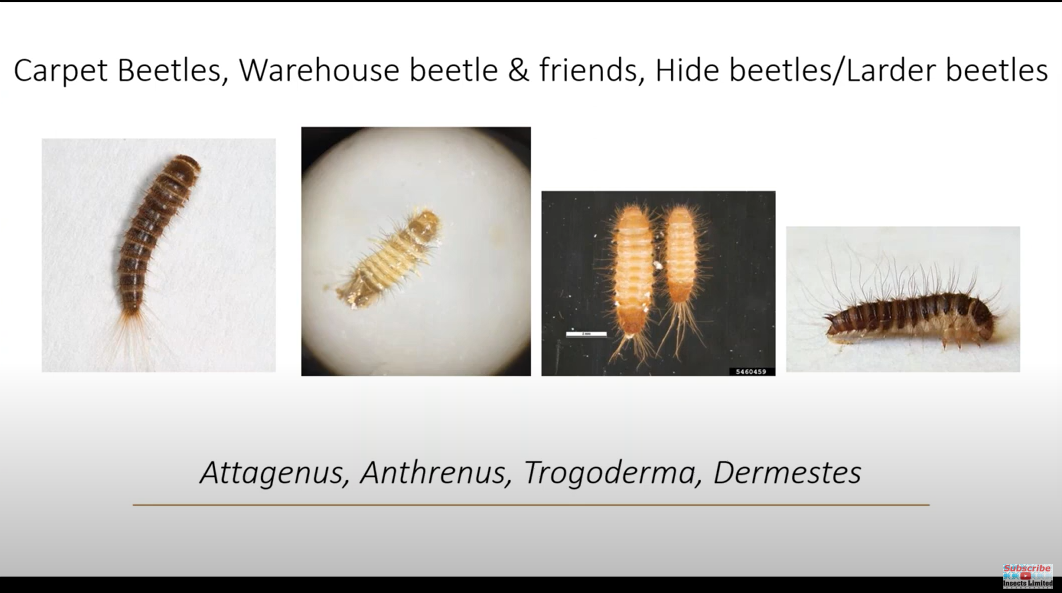
Watch: Carpet Beetles and Other Dermestids - How, why, and what to do about them
James Feston, BCE discusses carpet beetles and other dermestids: How, why and what to do about them.

Product of the Month: All Beetle AA Carpet Beetle Kit (IL-2110)
This All Beetle AA Carpet Beetle Kit includes 10 or 100 (select your quantity) complete All Beetle traps, 10 or 100 dermestid attractant lures, 10 pheromone Bullet Lures™ for Varied Carpet Beetles (Anthrenus verbasci), and Black Carpet Beetle, (Attagenus unicolor), as well as a glue board specifically designed to fit the All Beetle trap removable tray.

Insect of the Month: Varied Carpet Beetle (Anthrenus verbasci)
Varied carpet beetles are commonly found in nests of bees, wasps, and birds, but can also attack, horn, wool, hair, silk, dead insects and are occasionally found in meal, spices, and biscuits. It is a common household pest.

Clothes Moth History and Damage
Clothes moths have been a serious insect pest for thousands of years causing damage to clothes, furnishings, and other items made from animal materials like wool, fur, and feathers.

Meet Samantha Kiever - Insects Limited’s Newest Research Entomologist
Insects Limited is excited to announce the addition of a new staff entomologist joining our Research and Development department. After receiving her degree in entomology, Samantha (Sam) Kiever has joined the Insects Limited team, filling a role as a Research Assistant.

Product of the Month: All Beetle Trap Kit with RTU Gel Cartridge (IL-2750)
This All Beetle Trap Kit includes complete three-part All Beetle traps and multi-species beetle and moth attractants in a pheromone gel to monitor for the presence of food-infesting insects.

Insect of the Month: Lesser Grain Borer (Rhyzopertha dominica)
The Rice Weevil larvae do the greatest amount of damage as they The lesser grain borer is a primary pest of whole grains, especially corn and cassava root.
The adults chew small holes in the kernel and then lay several eggs in the grain or in the grain mass.
Damage is seldom noticed until exit holes appear and adults are seen roaming the grain mass.

Watch: 100 Rice weevils cause damage to pasta over 6 months
Rice and maize weevil (Sitophilus oryzae and zeamais) can cause major damage to stored grains and processed foods. Their movement through food can spread and encourage mold germination and their excrement leaves behind uric acid that can cause rancidity.
Following the theme this month, this video shows a time-lapse GIF of 100 rice weevils in pasta over a 6-month period at 82F (28C) and at 60% relative humidity. It is important to monitor for rice and maize weevil activity to help prevent populations from damaging products and causing customer complaints.

Product of the Month - All Beetle Rice Weevil Kit (IL-700)
This Rice Weevil kit combines the power of Insects Limited’s signature Bullet™ Lures for Rice Weevil, Sitophilus oryzae, with the innovation of the three-part All Beetle Trap™

Insect of the Month: Rice Weevil (Sitophilus oryzae)
The Rice Weevil larvae do the greatest amount of damage as they eat the inside of grains and seeds, leaving only a husk behind. The adults also have strong chewing mouthparts and will cause damage as well. Detection can be difficult in grains that have recently had eggs laid in them.
After some time, the damage becomes evident as the grains become so light and hollow, that you can easily break them into dust with your fingertips. In heavy infestations, chewing can sometimes be heard.

Watch: Clothes Moth Identification
This guide breaks down the differences between webbing clothes moths and casemaking clothes moths. Clothes moths of both species feed on wool, fur, feathers, mohair, animal hair and other animal fibers. They can infest museums, homes, and businesses.
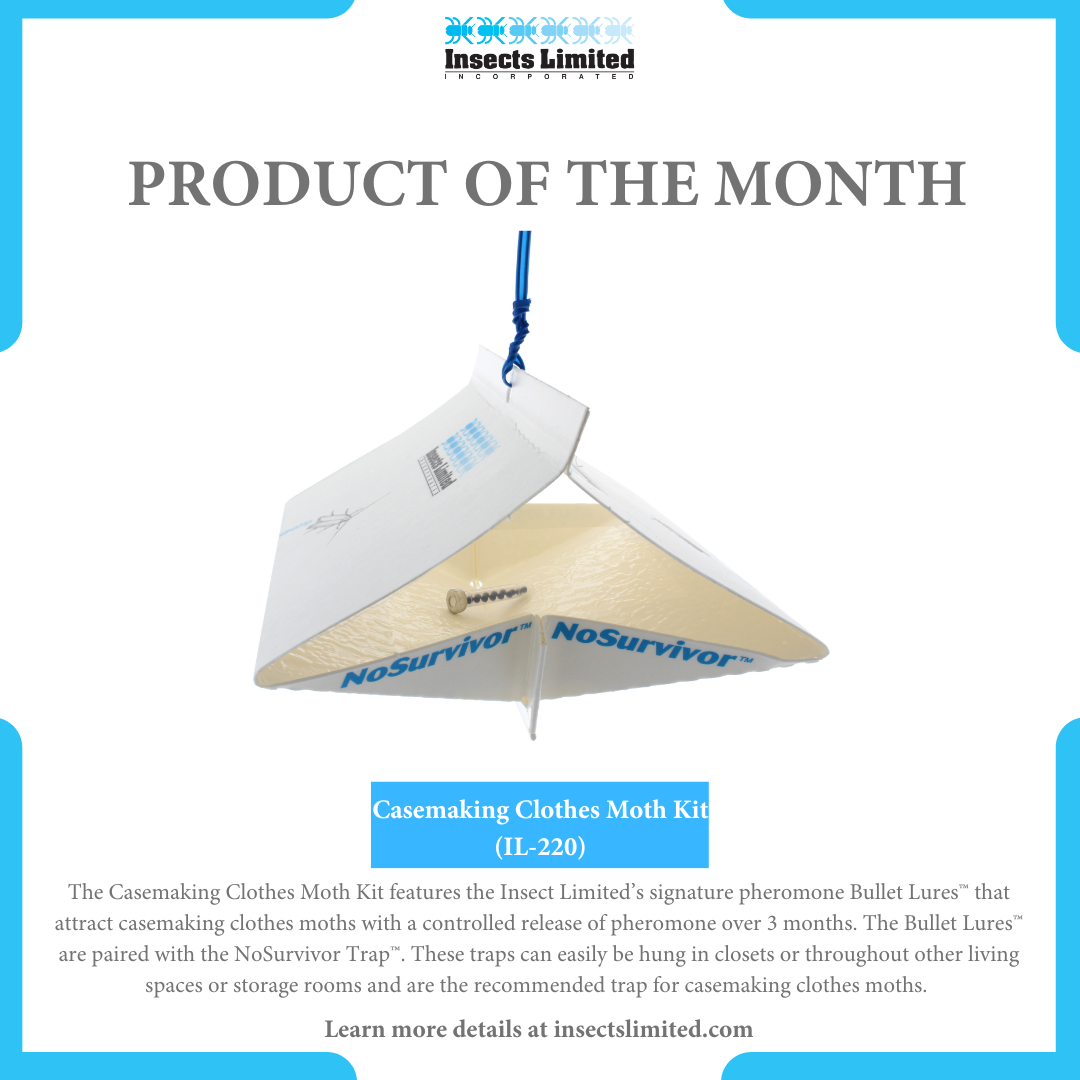
Product of the Month - Casemaking Clothes Moth Kit (IL-220)
The Casemaking Clothes Moth Kit (IL-220-10) features the Insect Limited’s signature pheromone Bullet Lures™ that attract casemaking clothes moths with a controlled release of pheromone over 3 months.
